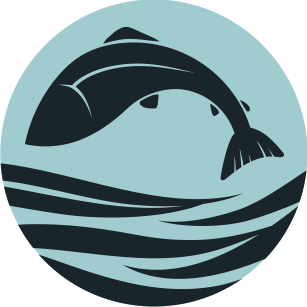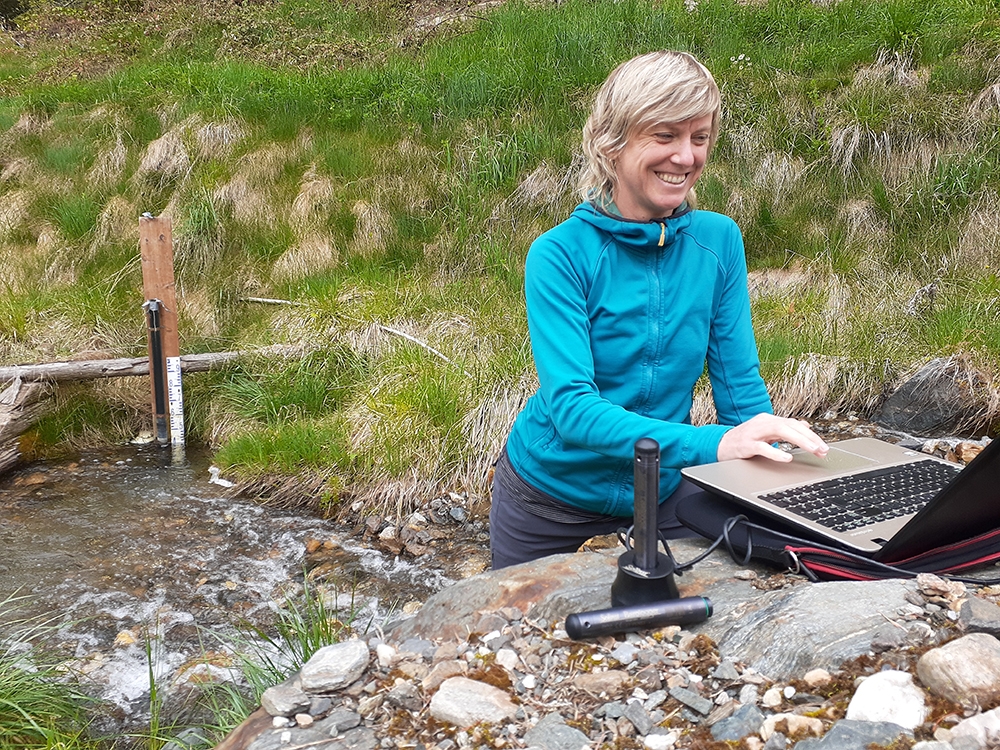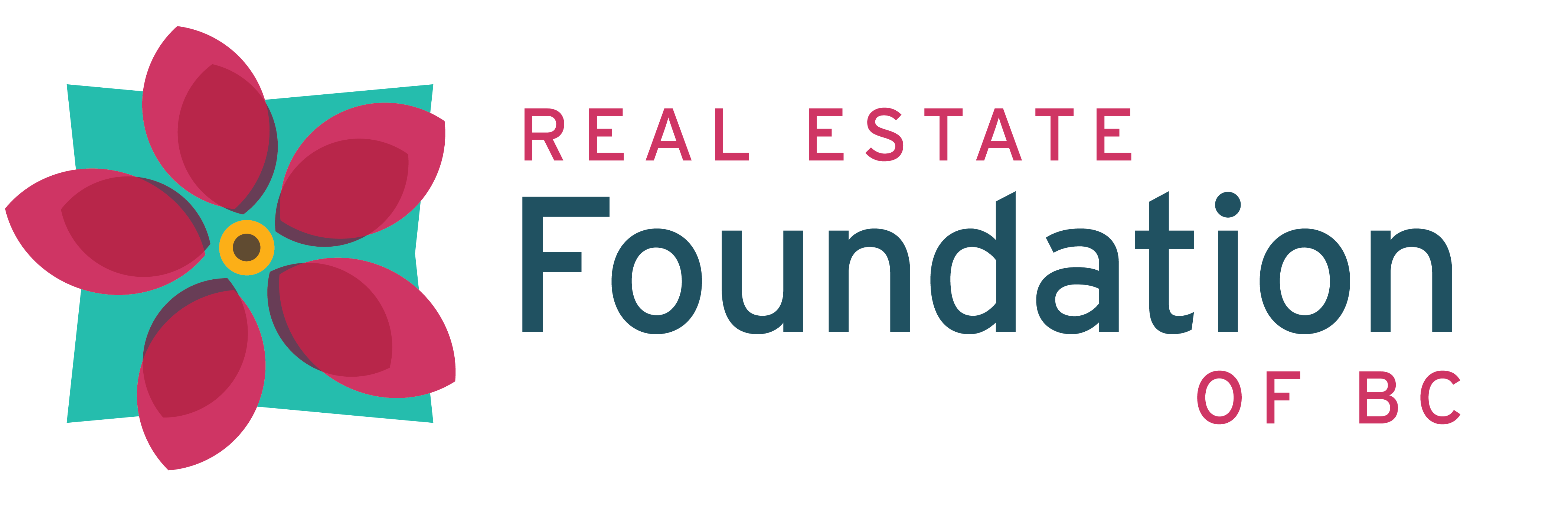Show Me the Numbers
Inside Living Lakes Canada's Water Data Hub
Our climate is changing, and watersheds are seeing the impacts: flooding, droughts, higher temperatures, and changes to fish habitat and migration patterns.
In the Columbia River watershed, smaller snowpacks have lessened spring runoff and groundwater recharge and lowered the amount of water in rivers and streams during the spring and summer months (a critical time for salmon migration). In years with lower water flows, communities have to make tough decisions about how much water can be used for irrigation and for generating hydroelectric power.
The impact of climate change on freshwater is something that Kyle Prince, a professional biologist with Living Lakes Canada (LLC), thinks about often. Prince is working with groups in the Columbia Basin to collect and share the water data that communities need to better understand and manage for climate adaptation options.
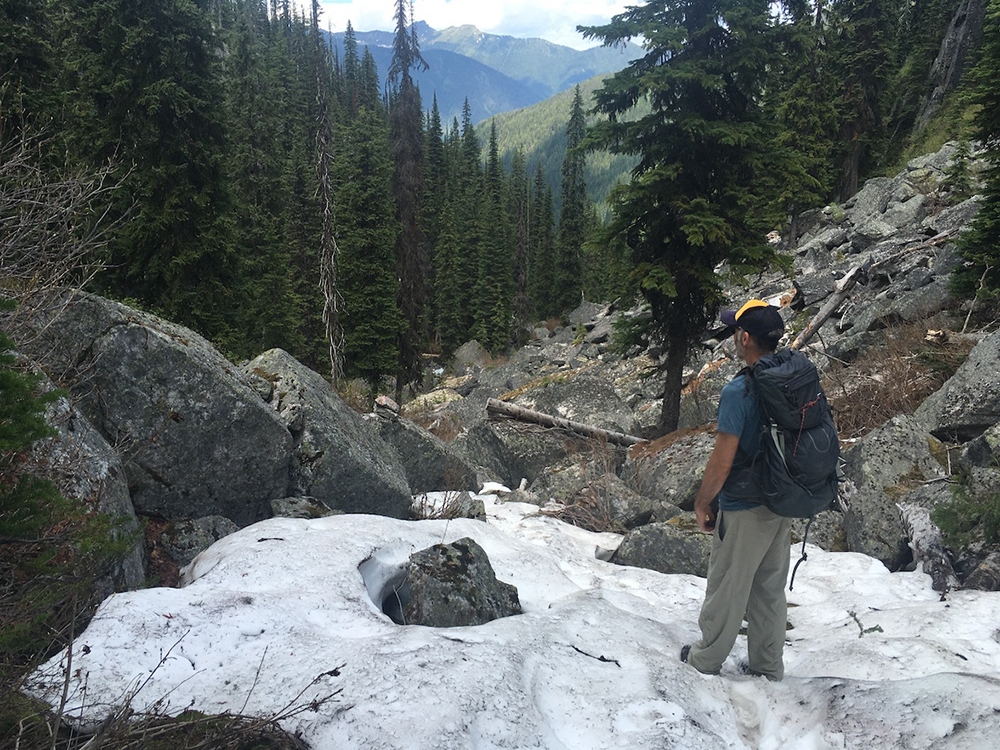
In years with smaller snowpacks, less water is available in the spring runoff season to recharge groundwater.
(Photo: Kyle Prince / Living Lakes Canada)
Community-based water monitoring programs, including those led by Living Lakes Canada, support the collection of critical data on water quality, quantity, and ecosystem health. Community planners and policy makers rely on this data to make decisions on water management in relations to hydrological and water quality changes due to climate impacts.
Filling Data Gaps
According to a 2020 WWF Canada report, planners and communities lack sufficient data for 60% of the watersheds in Canada. Without accurate and recent numbers, communities have a harder time gauging how human activities impact watershed health. In a 2017 report, the Columbia Basin Trust highlighted the growing need for a central system for collecting and storing consistent, timely, and reliable watershed data. Such a system could help communities make more informed decisions for managing and protecting freshwater resources.
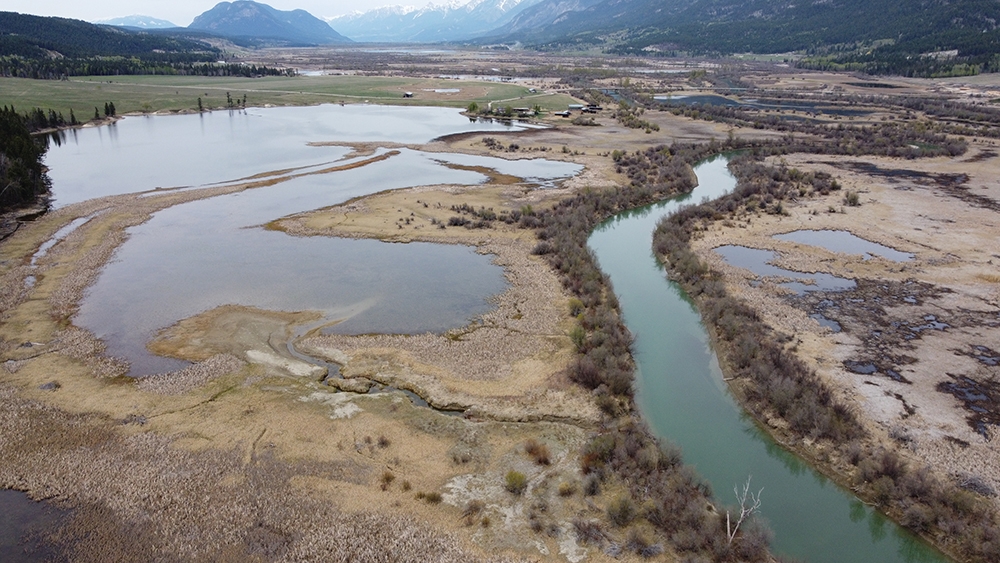
Columbia River wetlands.
(Photo: Annie Pankovitch / Living Lakes Canada)
To fill these gaps and help communities plan for the future, Living Lakes Canada is facilitating the Columbia Basin Water Monitoring Collaborative to establish a unified monitoring framework for the entire Basin region that reflects local water monitoring priorities within a scientific water balance approach. This new methodology is being piloted in two different areas of the Basin based on a Priority Monitoring Matrix developed by local experts including local monitoring groups, water managers, First Nations, industry, and consultants. Once finalized and proven a success, this pilot template will expand across the Columbia Basin’s 10 hydrologic regions, to better reflect the differences in climate in each region and collect the data associated with that climate variability.
In March 2021, LLC launched the Columbia Basin Water Hub, an open-source repository of water monitoring data that was developed with input from hydrologists, water stewardship groups, and other Indigenous and non-Indigenous local, regional, and provincial governments.
‘’The Columbia Basin Water Hub was developed to house historical and current water data in an open-source, publicly-accessible centralized platform,” says Prince. “Community groups did not have the resources and capacity to store data properly or safely, and now we have a data repository that supports the needs articulated by these mainly volunteer groups.”
Community-Driven Data
The Water Data Hub is a terrific example of the power of community and volunteerism. Hundreds of people across the region are engaged in water monitoring projects and pooling their findings into a shared hub that will, in turn, help communities become more water literate and prepare for climate change impacts to their respective watersheds.
Users can upload data in various formats (spreadsheet, PDF, photos) and can specify how data will be shared through the Water Hub’s Data Management Plans and Data Sharing Agreements. To improve search access, the Hub uses standard naming conventions and data can be filtered by source, type, or data grade.
’We really want this Water Hub to be a one-stop shop,” explains Prince. “We want the information to be available to both community groups and decision makers.”
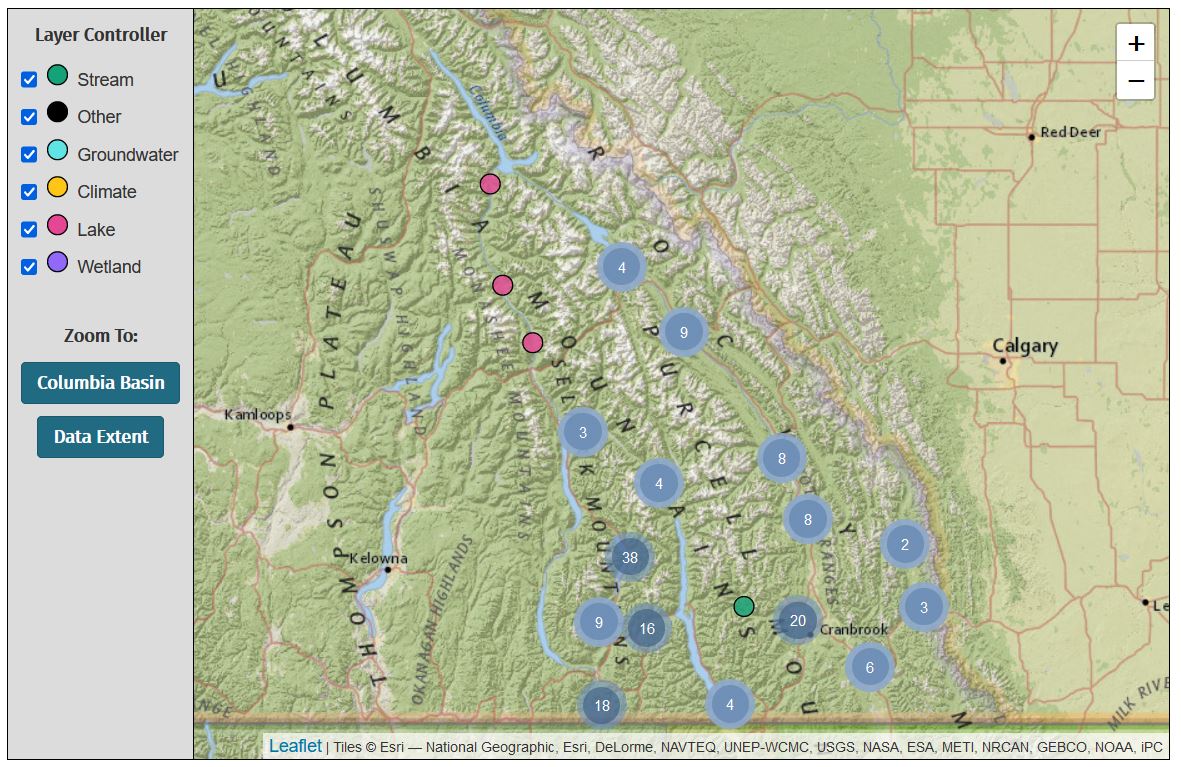
To support the Columbia Basin Water Hub, LLC and its partners collect data from the unceded traditional territories of the Ktunaxa, Lheidli T’enneh, Secwepemc, Sinixt, and Syilx Nations. Recognizing these Indigenous Nations as the original water stewards of the Columbia Basin, Living Lakes Canada has established and continues to work towards collective agreements and partnerships, such as MOUs and biomonitoring training courses for Nation members.
"Through the help of Indigenous Knowledge keepers, technical data, research and conservation projects can be supported, enriched with the intimate and intergenerational knowledge of land, water, animal, and spirit. By braiding Traditional Ecological Knowledge and western scientific technical data both paradigms can benefit from the fusion of the two very different relationships, and collectively become stronger, restoring the sacred balance to water," says Emily Mask, Water Reconciliation Coordinator with Living Lakes Canada.
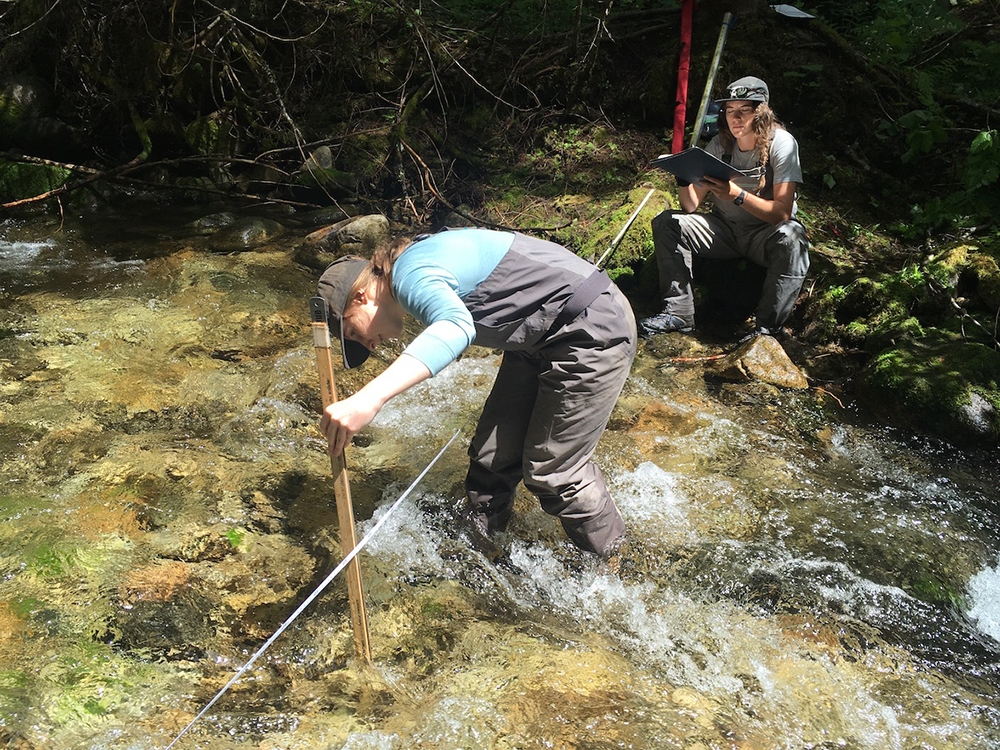
Volunteers completing biomonitoring training.
(Photo: Kyle Prince / Living Lakes Canada)
LLC is hosting a series of webinars, workshops, data management meetings, and
virtual drop-in office hours for the Hub, as well as collaborating with municipalities, First Nations, and community-based water monitoring groups.
“We hope to share our learning with other regions throughout B.C. since we have invested so much time and resources to date, and feel we now have a good platform worth sharing,” Prince says.
Economic Opportunity
The project supports 25 jobs and will help the region transition towards a greener economy by training Indigenous and non-Indigenous youth and people transitioning from other sectors. LLC is already collaborating with regions and interested First Nations across the province to help support the establishment of additional Water Hubs.
LLC’s water monitoring collaborative and data hub work was supported by funding through the Healthy Watersheds Initiative.
“This Healthy Watersheds Initiative funding was essential in allowing us to continue our efforts to support all levels of government to ensure watershed security in our region by expanding our work and creating many new and exciting jobs in the process,” says Paige Thurston, LLC’s database and community engagement coordinator, who said that working on this project has created an opportunity for her to grow her skills and knowledge.
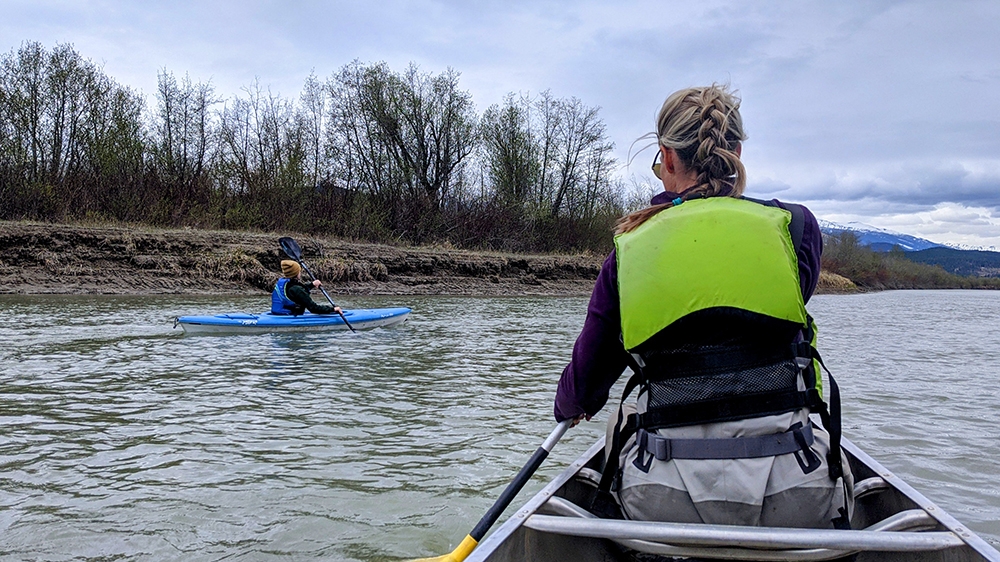
Cara Adrain and Georgia Peck use kayaks to help gather water samples.
(Photo: Annie Pankovitch / Living Lakes Canada)
“Prior to this position, my employment experiences had largely consisted of temporary, seasonal contracts,” Thurston says. “Attaining this 12-month contract has provided me with the opportunity to become invested in a project over a longer period of time, and I am pleased to be involved with growing and developing the Water Hub.”
By building the region’s capacity for watershed monitoring, this community-led project will yield data accessible to not only current residents but to all the future generations who will reside in this stunning part of the province.
Facts About Columbia Basin
- The Columbia River is the fourth-largest river by volume in North America and is 2,000 kilometres long.
- It originates in Columbia Lake in the Rocky Mountain Trench of southeastern British Columbia at about 2,650 feet above sea level.
- The Columbia River system is one of the most heavily dammed river systems in the world. There are over 450 dams in the trans-boundary Columbia River Basin, most of which were built to produce hydroelectricity.
- The 26,000-hectare wetlands are one of the few remaining floodplains wetlands in North America, and the only section of the Columbia that remains undammed.
- The Upper Columbia River and adjacent Columbia Wetlands are a 180-kilometre-long, biologically rich system and one of the largest wetland complexes in British Columbia.
- The Columbia Wetlands serve as unique habitats for diverse animals, such as birds, fish, reptiles, amphibians, mammals, and invertebrates, and are an important source of freshwater.
